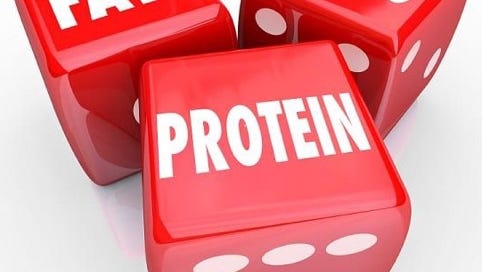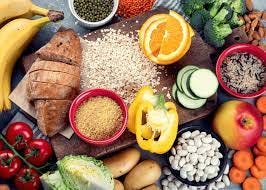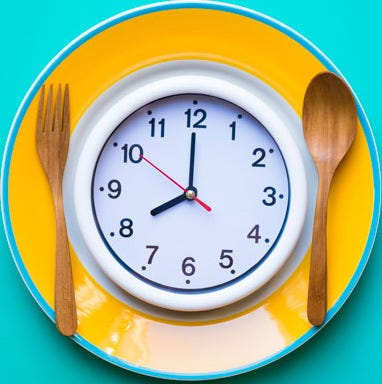Eat to ski ...
You have been doing your cardiac, gone to the gym, stretched, worked on the thigh muscles, stayed hydrated, and slept well. Excited, skis tuned, car packed, you’re ready to go.
What about your diet preparation? Skiing is energy. Has your diet been foods that feed sustainable energy?
All foods give us energy, however, not all foods affect energy levels in the same way. To function, including to ski or ride, we need three macronutrients to feed our bodies (and our minds): fats, proteins, and carbohydrates. For energy, the questions are what specific foods, in what relationships to other foods, and when.
Start with the bad news … all that industrial food that contains ingredients you have never heard of, whose ingredient labels you cannot pronounce, and that you purchase in the central aisles of the supermarket not only do not contribute to energy, they drain it. The main culprits are processed grains such as those found in white bread, white pasta, white rice, white pizza dough, and sugar, white refined sugar. Notice a color trend here? Foods rich in processed grains and sugar cause a quick rise in blood sugar and insulin levels, followed by a drop in energy. Whole grains, on the other hand, help regulate blood sugar levels and help keep energy constant throughout the day. Whole grains are also rich in nutrients such as B vitamins that contribute to creating energy in your body.
Panlasigui, N. and L. Thompson, “Blood glucose lowering effects of brown rice in normal and diabetic subjects,” Int J Food Sci Nutr. 57(3-4):151-158 (2006). doi:10.1080/09637480500410879
Carbohydrates are the body’s most important and quickest source of energy, but not all have equal value and impact; they are converted in the intestine to sugars. Fats are the second most important and slowest source of energy for the body; they are converted into fatty acids and glycerol. Proteins are chains of building blocks that are converted into amino acids. Let’s take a look at each of these macronutrients.
Carbohydrates are categorized as simple or complex, as well as having a low or high glycemic index (GI), which distinctions affect energy levels.
Simple carbohydrates are easily and rapidly digested, resulting in a rapid rise in blood sugar and insulin levels … an energy kick. Unfortunately, the energy kick is followed by an equally rapid drop in energy … the crash. We have all experienced this energy roller coaster. Those “energy bars” we carry in our parkas are in essence simple sugars. Yes, I can hear the objections, “I only carry the organic, natural energy bars.” Sorry, despite claims to the contrary and alleged “other benefits,” you might as well be carrying candy. Same goes for the “energy drinks” … here you get a twofer bang … sugar and caffeine.
Complex carbohydrates are composed of long strings of simple carbohydrates that take longer to be broken down in your body, and thus supply energy more slowly. They increase blood sugar levels more slowly and to lower levels, and for a longer time period. Consequently, complex carbohydrates provide a steady supply of energy throughout the day. Complex carbohydrate foods high in starch content include root vegetables such as potatoes and sweet potatoes; whole grains such as wheat, corn and rye; and legumes such as beans, peas and lentils. All complex carbohydrates contain vitamins and minerals, however, starches from whole grains and some fruits and vegetables are more complete nutrition because they also contain dietary fiber.
The glycemic index of a carbohydrate is a measure of how quickly its consumption increases blood sugar levels. The level of GI increase is affected by a number of other factors: what other foods are eaten at the same time, whether the carbohydrates have been processed or refined (finely ground foods tend to have a higher GI), how much fiber is in the carbohydrate, whether the food is cooked or raw, even how well the food is chewed and how quickly it is swallowed. GI is considered important because of how it triggers insulin production that affects blood sugar levels.
Your body needs fat for growth and energy … it has the ability to produce (synthesize) certain fatty acids. Others, termed essential fatty acids, must be consumed in the diet, most usually from vegetable oils or fish.
There are three varieties of fats: monosaturated, polyunsaturated and saturated. Foods derived from animals commonly contain saturated fats that are usually solid at room temperature … the white specks in the hamburger you purchase. Fats derived from plants are typically monosaturated or polyunsaturated, except palm and coconut oil that contain more saturated fats than other plant fats. Check the label on the potato chips and other snacks for the kind of oil; be especially wary if the undifferentiated term “vegetable oil” is used.
Remember when we were all told that natural fats were unhealthy and that we should be eating hydrogenated vegetable oil (trans fats) … butter out, margarine in; mayonnaise out, Miracle Whip in. The commercial food production industry glommed onto the inexpensive trans fats and made them ubiquitous in packaged and fast foods. After numerous research studies questioned the health effects of trans fats, and a number of law suits were filed against users of trans fats in industrial foods, the US Food and Drug Administration banned the use of trans fats in prepared foods as of June 18, 2018; first commercial food use of trans fats occurred about 1911.
Your body needs protein to function, to maintain and repair tissue, and for growth; it is not usually used for energy. However, if your body is not getting enough nutrients from other foods, your body breaks proteins into ketone that is used for energy. If you eat more protein than your body needs, it is broken down and stored as fat.
Proteins are complex formulations of amino acids. Your body cannot synthesize nine of some twenty amino acids. These nine, termed essential amino acids, must be consumed in your diet. Adults need eight, infants nine, of the essential amino acids. Your body can use one hundred percent of the protein in eggs, a large percentage in milk and meats, but less than half in most vegetables and cereals. The all-too-common blanket refrain that we should not eat meat or dairy products has been scientifically debunked; the right kinds of meat and dairy can provide proteins simply not found in other foods.
Youdim, A., “Carbohydrates, Proteins, and Fats,” Merck Manual, Healthy Living (Dec. 2021). https://www.merckmanuals.com/home/disorders-of-nutrition/overview-of-nutrition/carbohydrates,-proteins,-and-fats
That’s a lot of discourse about the why we eat and what happens to our energy level when we do. Now we have to talk about when to eat. There are two separate but intertwined considerations … when to eat over the days before heading to the mountain, and when to eat the days you are on the mountain.
Keeping a consistent meal schedule day to day has been shown to increase energy. Consistency is also linked to weight loss and a reduction in metabolic risk factors for chronic diseases. However, in today’s hectic lifestyle, sticking to a regular mealtime schedule is difficult with work, family, and personal time.
Pot, G., R. Hardy, and A. Stephen, “Irregularity of energy intake at meals: prospective associations with the metabolic syndrome in adults of the 1946 British birth cohort,” Br J Nutr. 115(2):315-323 (2016). doi:10.1017/S0007114515004407
However, one factor prevails. You might as well get over it, your mother was right … (again!, damn) … it is important to start your day with a good breakfast. To quote Adele Davis, a once popular yet controversial American nutritionist, one needs to "eat breakfast like a king, lunch like a prince, and dinner like a pauper." Let's Eat Right to Keep Fit, Signet Books (1954; revised edition September 1, 1970). Not good news for a significant number of people, skipping breakfast has both short- and long-term negative effects on energy level, nutrition and overall health.
Zeballos, E., and J. Todd, “The effects of skipping a meal on daily energy intake and diet quality,” Public Health Nutr. 23(18):3346-3355 (2020). doi:10.1017/S1368980020000683; Lopez-Minguez, J., P. Gómez-Abellán, and M. Garaulet, “Timing of Breakfast, Lunch, and Dinner: Effects on Obesity and Metabolic Risk,” Nutrients. 11(11):2624 (2019). doi:10.3390/nu11112624
You have tried your best to stick to a consistent meal schedule at home, and now you have made it to the mountain. Now what?
When you eat carbohydrates, proteins, and fats can significantly affect how you ski or ride; time them properly for the most consistent energy. “In general, athletes perform best with some carbohydrates on board,” says North Carolina-based registered dietitian Diane Boyd, L.D.N. Boston-based registered dietitian Lauren Sharifi, R.D. says, “My typical rule of thumb: a high-carb, moderate-protein, lower-fat snack 15-30 minutes before working out, or a balanced meal two hours before working out.” Powder hounds usually carb up for breakfast, but remember you need to give your body time to digest before hitting the slopes.
Kerksick, C., T. Harvey, J. Stout, et al., “International Society of Sports Nutrition position stand: Nutrient timing,” J Int Soc Sports Nutr 5, 17 (2008). doi.org/10.1186/1550-2783-5-17
Rizzo, N., “The Best Times of Day to Eat Protein, Carbs, and Fat” https://www.muscleandfitness.com/nutrition/healthy-eating/best-times-day-eat-protein-carbs-and-fat/
A contrasting point of view. When internationally renowned Michelin Star Chef Thomas Keller was at the Bocuse d’Or as the president of Team USA he was asked about his breakfast. The Bocuse d'Or is a world chef championship held biennially at end of January in Lyon, France.
“What would you have for breakfast on a big Bocuse d'Or day if you were competing?
“A lot of protein and no carbs. I typically eat eggs every morning. So, there's boiled, soft-boiled, or scrambled. I always put it with a green vegetable, try to get my iron with spinach. I get my protein, a little bit of fat with olive oil. Fat helps extend the effects of protein in the mornings, so I don't think I'm hungry too early. I want to make sure I have enough fuel to take me through my day—whether it's my day at French Laundry or a day here. Good proteins, good fats, good vegetables get you a long way. And caffeine.
“How do you take your coffee?
“Black. It’s just easier. In a kitchen, it's just easier. You learn how to be efficient. Putting cream and sugar, you have to go somewhere or you have to keep the cream and sugar somewhere.”
https://www.myrecipes.com/extracrispy/thomas-keller-farm-to-table-absurd
Morning runs down, time for a refuel. And time to think about the quality of your skiing or riding, not just the number of runs or vertical feet. Energetically initiating your turns, or just waiting for gravity to take hold? Finishing your turns? How do you want to spend the rest of your day? That energy bar in your pocket will give you a micro-burst of energy, but will not sustain you. To maintain body energy, best you go in for a more balanced meal. Also, your muscles use protein more efficiently if you consume it in smaller doses throughout the day.
Daylight fading, muscles tired, just enough energy for a last quality run off the mountain. Now what?
The long-established traditions of après ski may not be the best for your energy level for another day of skiing or riding. “First and foremost, alcohol initially raises your blood sugar level, then as insulin is released into your bloodstream, your blood sugar level rapidly decreases, making you feel weak. Although you are taking in plenty of fluids when you drink alcohol, you will typically find yourself urinating more frequently as your kidneys are working overtime to flush the alcohol out of your body. This then leads to dehydration, which in turn depletes your level of energy as an overabundance of vital minerals and nutrients are flushed away.” Jarschauer, E., “5 Ways Alcohol Affects Your Energy Levels,” https://www.lifehack.org/908459/how-does-alcohol-affect-the-body
Furthermore, alcohol consumption has been shown to reduce the level of melatonin in your body, which is a critical element in regulating your circadian rhythm, thereby interfering with your internal sleep-wake cycle. And without an adequate amount of rest, your endurance and stamina will decrease if your body is unable to recharge.
Wasielewski, J. and F. Holloway, “Alcohol’s Interactions With Circadian Rhythms,” National Institute on Alcohol Abuse and Alcoholism. https://pubs.niaaa.nih.gov/publications/arh25-2/94-100.html
It was a rude awakening for me to find out that the beer I usually enjoyed after my last run did not provide the energy and health benefits often promoted. It does provide carbs and electrolytes, but the benefits are marginal compared to the beer company marketing efforts. Bummer.
“Post-exercise recovery differs with respect to the type of exercise. Cardio recovery requires primarily carbs with smaller portions of protein, while strength training recovery calls for protein,” says Boyd. Skiing and riding require both strength and cardio fitness. The ISSN suggests eating protein within three hours of exercise to increase muscle synthesis; adding carbs may provide additional benefits.
We finally get to the question of what to eat. It should not surprise you that overall the best diet is the Mediterranean diet or the modified version of it … for both energy and general health. Skiing or riding days may shift the ingredients and the timing, but not the essential structure.
The Mediterranean diet delivers more than just energy, especially through specific food choices. The largest benefits flow from non-GMO fresh organic vegetables and fruits, organic whole grains, beans, nuts, and seeds, wild-caught fish, 100% grass-fed meat, free-range poultry, dairy from 100% pasture raised animals; extra virgin olive oil the primary fat; red wine consumed in moderation. The Mediterranean Diet discourages fried foods, hydrogenated oils, refined carbohydrates (baked goods from refined flour and sugary desserts), beverages with added sweeteners (sodas and juices), high-fructose corn syrup, and fatty, processed meats, such as lunch meat, bologna, and cured ham. You can easily find details and modifications on the Web that fit your lifestyle.
Eat well, ski well, ride well, live well.
***********
The Well-Fed Skier is headed for the slopes. We wish you snow-filled, merry and joyous holidays with family and friends. The Well-Fed Skier will return in the New Year.









